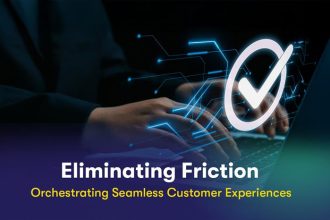Bridging the Future: The Intersection of Digital Transformation, Customer Experience, and MarTech Engineering
Introduction
Admit it: running a company today is similar to riding a unicycle while juggling swords that are on fire. Being in constant solidarity upheaval from rapidly changing customer requirements and fast-developing technology creates a feeling of being lost among many stakeholders. Based on my experience as a digital marketing and transformation professional, I found out that the shift to Customer Experience (CX) and Digital Transformation is not advisable; it’s imperative. But this is not enough. Most people do not focus on another component of this jigsaw—MarTech engineering. This chapter details how these three components interrelate to foster growth and achieve the common purpose of businesses.
The Dynamics of ‘Digital Transformation’ and ‘Customer Experience’
To begin with, let us state the most important thing: what is the meaning of the term digitally driving the business transformation? It is more than a matter of figurative speech; it is a definitive change in an organization and often a somewhat painful one. This is a case of assimilating modern technology into the structure of the business to the extent that all processes within the business and even those on the outside are affected. Picture it as a transformation of the system that changes the company-customer relationship in an effort to achieve positive growth in the long run.
Now, let’s talk about CX. Customer Experience encompasses the emotions and thoughts of the customer while interacting with a brand. It includes all customer affairs, from the first time a customer hears about a business to the last time, which is up to the purchase and after. And when this is done awesomely, the customers think to themselves, “Gee, these guys really understand me!” Statistics show that companies with good customer relief strategies hike their earnings by 5.7 times compared to those with no such efforts. And this is not just some statistic; this is a reason for a lot of action.
The Interdependence of Digital Transformation and CX
Let us look at the hottest issue: the relationship of CX and digital transformation. They are not independent processes; they are interdependent objectives that enhance performance. When organizations seek to improve CX because it is part of their digital transformation goals, the probability of success is far better than that of organizations that approach CX improvement as its own isolated project.
An excellent example is a particular project that I worked on with a retail client who had some hassles with long checkout lines and long waiting music. These pain points were not going to be skirted around. With the goal of tackling those areas of customer satisfaction, operating some marketing technologies such as customer relationship management (CRM) systems and analytic tools helped in optimizing operations as well as increasing customer engagement. What followed? Exceptional results from customer satisfaction scores that increased by 30 percent, and the level of repeat purchases also grew significantly. It was a win-win situation, not only in terms of the ‘numbers’ but also in terms of building a customer-centric culture where every interaction matters.
Changing the Way of Change Through MarTech Engineering
While sculpting the MarTech model, the importance of MarTech engineering became obvious. MarTech is defined as the set of technologies that allow companies to perform certain marketing functions and communicate with customers more efficiently.
So, what does all this praise for MarTech engineering come from? Let’s break it down:
- Data is the new oil: Scholars give it attention because they can see the marketing picture coming together every time. In this day and age, data isn’t the problem; it’s how you use it. MarTech makes it easier to collect and process a client’s information. This means that companies are able to truly appreciate the clients and provide better satisfaction. If you know what your customers want, it is just a matter of handing it over to them. That is where the magic takes place.
- Integration is everything: With the right MarTech tools, businesses can merge different systems to smooth out the customer experience. Imagine having all angles about your customers—360 degrees. It may not just be powerful; it is downright perturbing the normal practice.
- Individualism: It is human nature to seek more than what has been provided. How has MarTech engineering made it possible for companies to ensure that the right message and offer are presented to the right audience? It is good because it’s self-explanatory.
- Flexibility & Resilience: Everything in the digital world is like quicksand; it is ever-changing. There should be ease of movement for organizations in order to avoid market irrelevance. For instance, Diligent has owned its cloud platform in the former KMC Technologies office. It is possible to change or revise strategies regarding market phenomena or even leave space for changes based on the results obtained due to customer feedback. This level of responsiveness can make all the difference.
Lessons Learned Along the Way
In addressing the matter of CX, MarTech engineering, and digital transformation, several key insights emerged clearly:
- Customer Orientation: The customer should never leave the soles of one’s shoes unless they do some horse treating. Each digital shift in an organization should seek to improve how customers relate to the organization. This particular change of automatic thinking generally brings mind-blowing results.
- Seek Out Change: Change is hard, yes, but it is also an avenue for progress. Foster an environment that respects creative destruction and inspires members to shed the old ways of doing things.
- Provide Training: When new technologies are in place, there is a need to ensure all employees are trained. This can be achieved by equipping employees with the skills and knowledge on how to utilize the MarTech tools fully.
- Set and Improve: Define how the success of digital transformation and customer experience strategies will be measured. Performance tracking helps to measure the success of the strategies and their effectiveness against the expected goals, thereby enabling refresher strategies.
Conclusion
For once acknowledging that it is indeed competition that drives variety in competencies, it follows that CX, MarTech engineering, and digital transformation are interdependent. Companies that see this link are not only afloat; they are growing from being teenage-oriented grownups to matured interfaces of the industry.
The question is no longer whether this journey should be embarked upon, but rather how soon we can close the gap that currently exists between how things are and how things should be. We can dream of transformation and inspire our teams for the impossible, but it all starts with doing.



